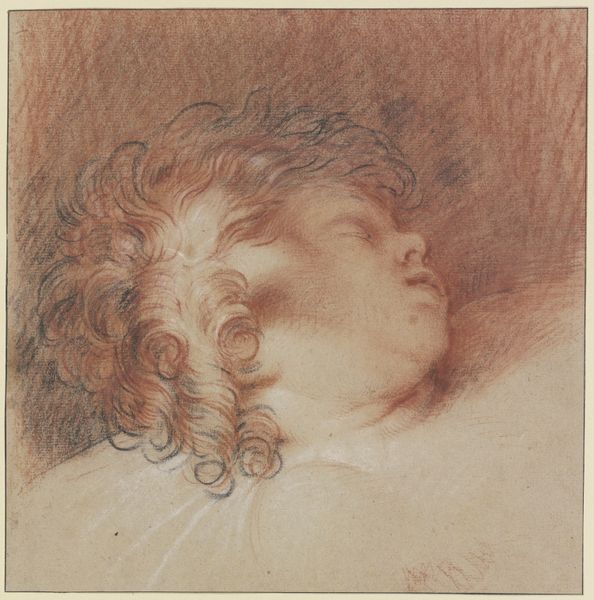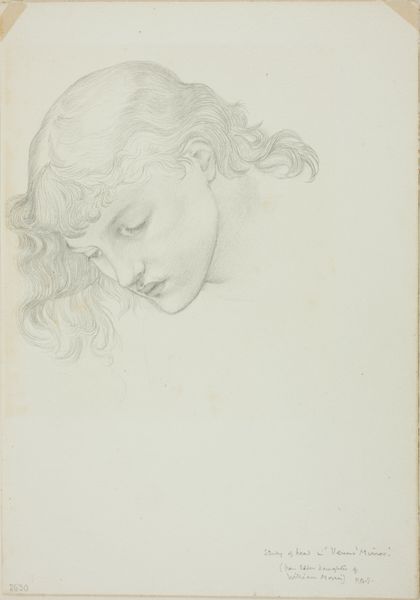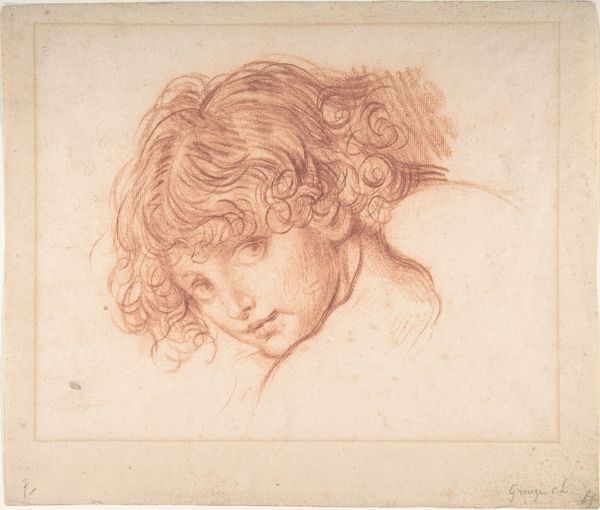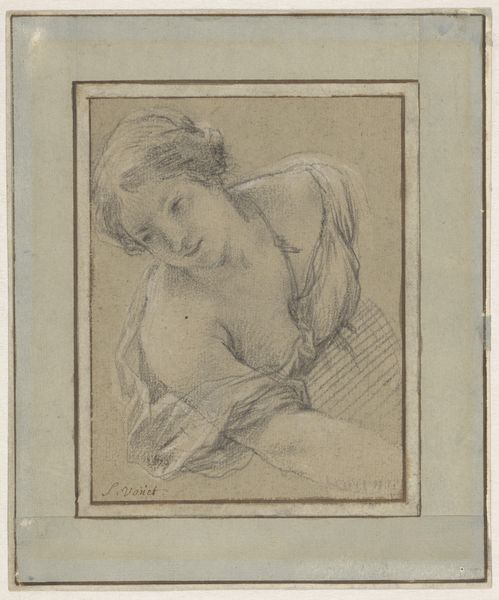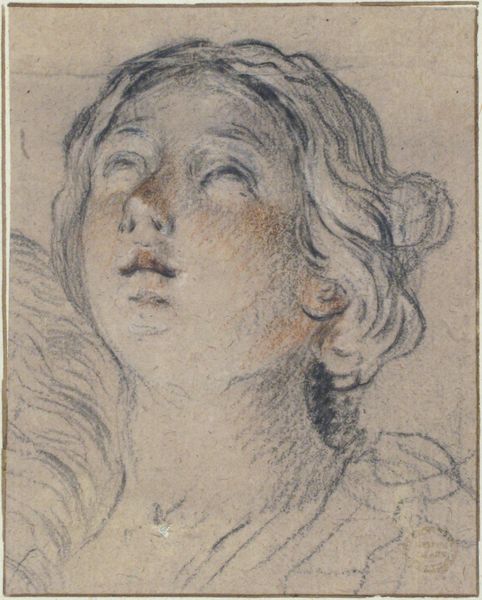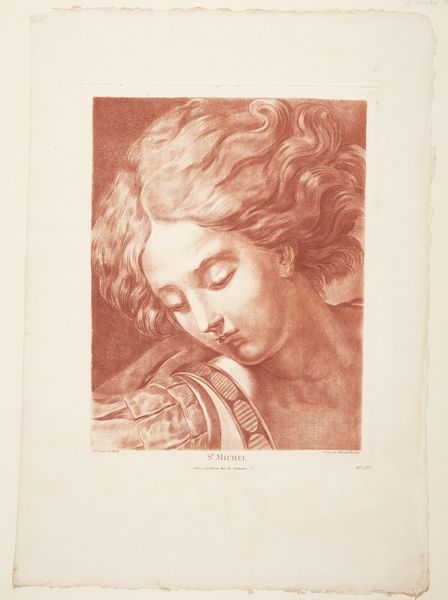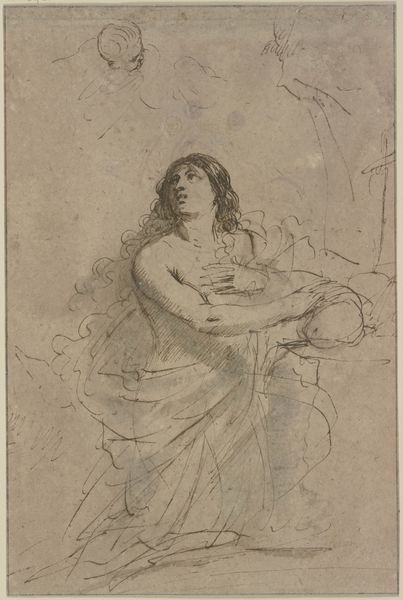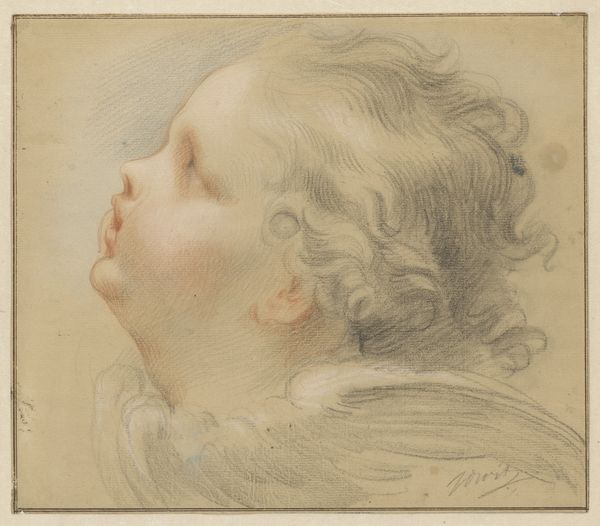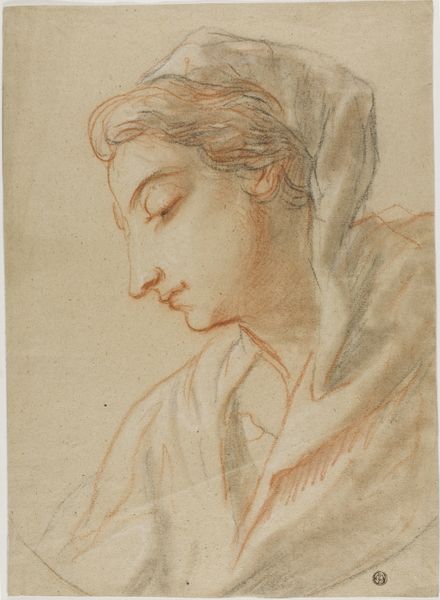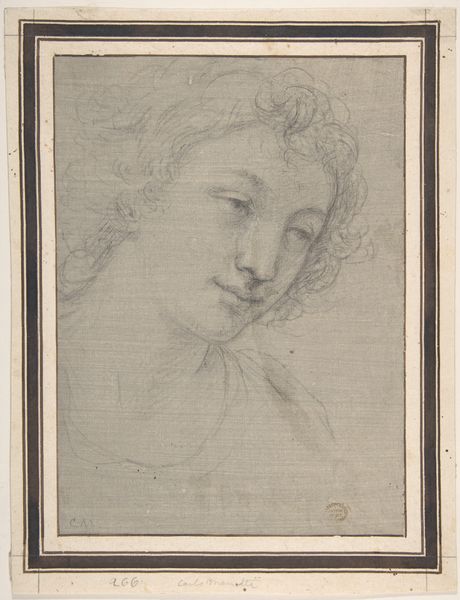
drawing, print, pencil
#
portrait
#
pencil drawn
#
drawing
#
neoclacissism
# print
#
pencil drawing
#
pencil
#
portrait drawing
Dimensions: Sheet: 2 11/16 × 2 3/4 in. (6.8 × 7 cm) Mount: 11 1/16 in. × 7 5/16 in. (28.1 × 18.5 cm)
Copyright: Public Domain
Curator: Aw, how sweet! There’s something incredibly touching about this delicate drawing, it evokes such tenderness. Editor: Indeed! Let's take a closer look at "Head of a Sleeping Child," attributed to Baron Dominique Vivant Denon, crafted sometime between 1765 and 1825. It's a beautiful example of a portrait executed in pencil. You can find this little treasure at The Met in New York. Curator: Its scale surprises me, there is something really endearing in such minute art that displays simple, undisturbed beauty, right? It really encapsulates this quiet stillness. The soft lines create such a peaceful, almost dreamlike, state, which suggests that the child is safe, in a comforting setting. Editor: I agree. The image resonates deeply as a representation of innocence. Sleeping children, you see, appear across diverse cultures as potent symbols: vulnerability, purity, potential—but also the bittersweet recognition of fleeting time. The child archetype appears as a potent symbol that reflects collective memories. Curator: It does prompt us to wonder, doesn’t it? About the child, their life. What’s truly lovely, at least to my eye, is that the ruffled collar adds a layer of softness. Like the child has snuggled into it for maximum comfort, that you just want to stroke it lightly. It makes the work come alive! Editor: And in the tradition of neoclassical portraiture that was coming into fashion, the attention to the drape of the garment and soft focus, amplifies that effect; it’s more about revealing character and a sensibility than likeness. This technique really creates a sense of intimacy. It really draws the viewer into the subject’s interior world, something far from Neoclassical art we might know from sculptures with stiffed poses and frozen affectations. Curator: What remains with me, however, is how art serves as this silent witness to vulnerability. We pause, look closely, connect… How many sleepy children must have passed since the birth of the portrayed subject? Editor: For me, it evokes a powerful longing, doesn’t it? It seems to speak to something profound about the human condition – perhaps a universal desire to protect innocence, to hold onto these transient moments of bliss.
Comments
No comments
Be the first to comment and join the conversation on the ultimate creative platform.


